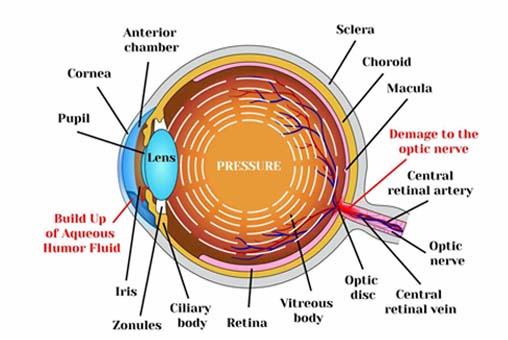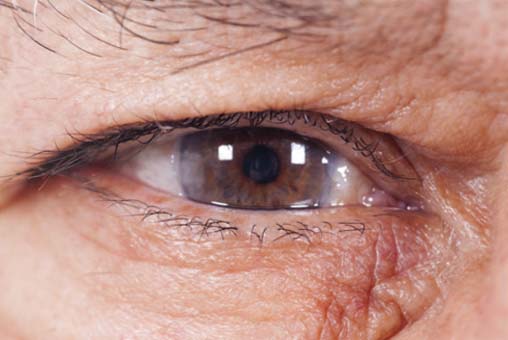Glaucoma
Glaucoma refers to a category of eye disorders often associated with a dangerous build-up of internal eye pressure (intraocular pressure or IOP), which can damage the eye’s optic nerve that transmits visual information to the brain. With untreated or uncontrolled glaucoma, one might eventually notice decreased ability to see at the edges of peripheral vision. Progressive eye damage could then lead to blindness. In fact, glaucoma is the second leading cause of blindness.
What causes glaucoma?
The space in the eye between the cornea and the iris is filled with a clear fluid. This fluid leaves the eye and enters the blood by passing through a gap at the angle where the cornea and iris meet called the trabecular meshwork. This tissue regulates the flow of fluid within the eye. When there is an obstruction or slowing to flow of fluid through the meshwork the fluid pressure in the eye raises resulting in the optic nerve damage Sometimes, eye infections, injuries, or certain medications can narrow the gap and compress this spongy tissue resulting in a rapid buildup of fluid and eye pressure.
What are the symptoms of Glaucoma?
- Loss of vision
- Blurry vision
- Persistent headache
- Eye redness
- Stomach upset, nausea and vomiting
- Pain in the eye
Why did you get it ?
Anyone can get glaucoma, but some people may be at higher risk than others.
- A family history of glaucoma
- People over 40 Years
- People who get migraines
- People who have Raynaud’s phenomenon
- Increased eye pressure
- Being very short- or long-sighted
- Previous eye injury
- Current or previous use of steroids
- Side-effect from Treatments
- Central thinning of the cornea.


